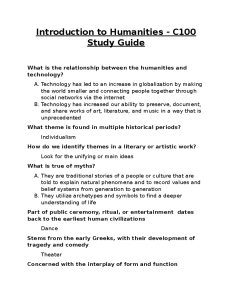Dance therapy is a powerful form of expressive movement that combines creativity and healing. By integrating dance techniques with psychotherapy, it facilitates emotional release and self-discovery. Whether finding release through dance during a session or exploring spiritual dance practices, participants often experience a profound sense of dance freedom. This transformative approach not only helps individuals cope with mental and emotional challenges but also encourages a deeper connection with their bodies. Embracing dance as a therapeutic tool can unlock pathways to joy, healing, and personal growth.
Dance therapy, also known as movement therapy, promotes psychological healing through the art of dance. This therapeutic approach harnesses the intrinsic benefits of movement, allowing individuals to express their emotions authentically. Engaging in these rhythmic practices can unleash creativity and provide a sense of freedom, enabling participants to tap into deep-seated feelings. By channeling energy through dance, individuals often find clarity and resilience, which can lead to significant personal breakthroughs. Overall, the essential goal of movement therapy is to foster connection – both with oneself and with others.
The Healing Power of Dance Therapy
Dance therapy is a transformative practice that integrates physical movement with emotional expression, providing individuals an opportunity to release pent-up emotions and experience profound healing. This form of therapy harnesses the innate connection between body and mind, offering participants a safe space to explore their feelings through expressive movement. Whether it’s through contemporary dance techniques or traditional forms, the emphasis on movement allows individuals to communicate their inner experiences without the constraints of verbal dialogue.
For many, dance therapy is a cathartic journey that leads to self-discovery and personal growth. Participants often find themselves ‘finding release through dance,’ shedding layers of anxiety and stress as they become more aware of their bodies. This can result in a deep sense of freedom; the body moves as it feels, unencumbered by societal expectations. Engaging in dance therapy, participants not only cultivate a deeper connection with themselves but also with others in the space, fostering communal healing through shared experiences.
Exploring Spiritual Dance Traditions
Spiritual dance, a practice encompassing various cultural traditions, serves as a powerful means of connecting with the divine or the mystical elements of existence. Drawing from ancient practices, these forms of dance often embody rituals that celebrate life, death, and rebirth. In cultures around the world, spiritual dance can evoke profound feelings of ecstasy and connection, transporting participants into trance states that reveal deeper truths about their lives and the universe.
Through the lens of spiritual dance, individuals explore themes of identity, community, and transcendent experiences. The act of movement becomes a language of its own, allowing dancers to express their beliefs and emotions in a way that transcends words. Furthermore, engaging in ritualistic dance can become a conduit for one’s personal or communal history, unveiling narratives that resonate within the dancer and the observer alike. It encourages not just personal emancipation but also a celebration of collective identity.
Reviving techniques from various cultures, such as djine foly, dancers are able to access spiritual realms, creating a visual and physical dialogue with the divine. This connection often leads to a heightened sense of awareness and liberation, allowing one to express heartfelt emotions and experiences through rhythmic body movements. Thus, the beauty of spiritual dance lies in its ability to offer freedom of expression while simultaneously connecting individuals deeper to their roots.
Expressive Movement and Its Impact on Mental Health
Expressive movement is more than just physical activity; it represents a holistic approach towards mental well-being. By engaging in free movement and dance, individuals often report significant improvements in their emotional states. The joyous flow of dance releases endorphins, promoting positive feelings and serving as a natural antidepressant. When combined with expressive techniques, dance becomes an outlet for individuals to convey emotions that may be difficult to articulate.
Research consistently highlights the correlation between expressive movement and reduced anxiety levels. Participants in dance classes often find that they can release feelings of stress and encounter a sense of rejuvenation. This improved mental state fosters more creative thinking and enhances problem-solving skills—effects that can transfer into everyday life. Therefore, allowing ourselves the freedom to dance becomes a crucial tool in maintaining mental health and emotional balance.
Dance as a Form of Liberation
Dance provides a unique platform for liberation, allowing individuals to break free from societal constraints. In moments of self-expression, the rigidities of everyday life seem to fade, granting dancers the freedom to explore their true selves. As Jeffrey L. Page mentions, ‘Ain’t nobody concerned if you look good!’ This powerful reminder encourages participants to prioritize internal freedom over external judgment. When one summons the courage to dance without inhibition, it inevitably leads to a profound experience of liberation.
Moreover, the concept of dance freedom is particularly significant within communities that have historically faced oppression. Through dance, individuals and groups express their resilience and reclaim their narratives, often crafting a sense of identity that resonates with empowerment. As each person dances, they contribute to an ever-growing tapestry of stories, showcasing diverse experiences of struggle, joy, and liberation that can inspire change and understanding amongst audiences.
Unleashing Creativity through Dance Techniques
Embarking on a journey through various dance techniques fosters a creative spirit that can manifest across all areas of life. When individuals explore different dance styles—from ballet to hip hop, contemporary to traditional folk dances—they unlock new avenues for self-expression. These dance techniques often require practitioners to step out of their comfort zones, leading to personal growth and a rich exploration of creativity.
Moreover, learning diverse techniques enhances one’s physicality, adaptability, and overall recognition of personal movement preferences. As dancers integrate styles and techniques, they not only enrich their artistic expressions but also develop a unique voice. This versatile capacity, when applied to different areas of life and work, cultivates innovation, problem-solving, and resilience—attributes invaluable in today’s fast-paced world.
The Art of Finding Release Through Dance
Finding release through dance is an artistic act of shedding emotional weight and cultivating a sense of inner peace. Jeffrey L. Page’s energetic approach emphasizes the need to shout and release the burdens we carry, mirroring the liberating power of dance. In the act of movement, individuals often experience an exhilarating breakthrough that allows them to let go of stress, anxiety, and unexpressed emotions.
This process encourages a cathartic outpouring of feelings, allowing dancers to express what may feel inexpressible in everyday life. Moreover, the act of allowing oneself to be seen—of dancing as though the world is watching—becomes a transformative experience, reinforcing personal narratives and generating empowerment. Embracing the ethos of ‘just dance’ deepens our connection not only with ourselves but also with the communities that witness our movement.
The Role of Community in Dance Practices
Community serves as a supportive backdrop that can enhance the experience of dance practices. Gathering in groups, whether in a formal class setting or an informal gathering, fosters a sense of belonging and shared purpose. Within these communities, dancers often encourage one another, celebrating the unique expressions each individual brings to the floor. This collective energy contributes to a positive atmosphere where everyone feels empowered to embrace their dance journey.
Moreover, communal dance experiences help reinforce cultural narratives and strengthen ties among participants. As individuals share stories through dance, they dynamically contribute to the evolution of those narratives, creating a rich tapestry of cultural identity. Engaging in these practices together heightens the sense of connection and understanding, bridging gaps between personal experiences and the greater community fabric. In this way, dance becomes a beacon of unity and celebration.
The Intersection of Dance and Cultural Identity
Dance often embodies the essence of cultural identity, serving as a vessel through which traditions and values are expressed. Many cultures utilize dance as a form of storytelling, packing history and social norms into each movement. Through various dance styles, individuals reconnect with their heritage and help keep traditions alive for future generations, ensuring that cultural narratives continue to flourish.
Additionally, the intersection of personal and cultural identity through dance can foster stronger connections within minority communities. This expression creates turns dance floors into spaces for cultural affirmation and pride, reinforcing a collective identity through shared rhythms and movements. Diverse cultural practices remind us of our interconnectedness while celebrating the uniqueness of each tradition, ultimately enriching the global dance community.
Embracing Dance Freedom for Personal Growth
Embracing dance freedom is essential for personal growth, as it encourages individuals to explore their authentic selves without fear of judgment. When one allows their body to move instinctively, free from societal expectations, a transformative process occurs. This freedom invites exploration, self-discovery, and a deeper connection to one’s emotions, leading to greater personal insight and emotional clarity.
As participants engage in dance, whether in solitude or community, the resulting experience often becomes a pathway for healing and expression. Allowing oneself the liberty to express freely can foster a profound love for oneself and cultivate resilience against life’s challenges. This journey through dance freedom is not just about the movements; it’s a reflection of inner strength, creativity, and the overall capacity to thrive.
Frequently Asked Questions
What is dance therapy and how does it incorporate spiritual dance?
Dance therapy, also known as dance/movement therapy, utilizes expressive movement and dance techniques to promote emotional, cognitive, and physical integration. It often includes elements of spiritual dance, where practitioners use movement to explore their inner self and transcend limitations, thereby facilitating personal growth and healing.
How does finding release through dance aid mental health?
Finding release through dance can significantly improve mental health by allowing individuals to express emotions and relieve stress. Dance therapy encourages participants to move freely, fostering an environment where they can connect with their body, release pent-up feelings, and experience catharsis, ultimately leading to enhanced emotional well-being.
Can you explain the role of expressive movement in dance therapy?
Expressive movement is a cornerstone of dance therapy, as it allows individuals to convey emotions non-verbally. This practice helps participants tap into their feelings and experiences, facilitating healing and self-discovery. By using dance techniques, clients can express their unique stories, often leading to deeper insights and personal transformation.
What are some benefits of engaging in dance freedom during therapy sessions?
Engaging in dance freedom during therapy sessions promotes self-acceptance and joy. It allows participants to break away from societal norms and expectations, fostering creativity and individual expression. This form of dance encourages clients to celebrate their bodies and emotions without fear or judgment, which is essential for personal growth and healing.
How can dance therapy connect individuals spiritually?
Dance therapy can foster spiritual connections through movement that goes beyond the physical. By exploring traditional practices like djine foly, individuals can enter trance-like states that enhance their spiritual awareness. This connection allows for profound healing experiences, enabling dancers to access their inner wisdom and release emotional burdens.
What techniques are commonly used in dance therapy?
Common techniques in dance therapy include guided improvisation, movement analysis, and structured dance exercises. These methods help individuals explore their feelings through expressive movement, promote body awareness, and develop coping strategies. Each technique encourages participants to express themselves authentically, facilitating emotional and psychological healing.
How does dance therapy help with trauma recovery?
Dance therapy aids trauma recovery by providing a safe space for individuals to express their feelings through movement. This therapeutic approach allows clients to process traumatic experiences non-verbally, helping them to release anxiety and reclaim their sense of self. Through dance, they can communicate their pain and move towards healing in a supportive environment.
What age groups can benefit from dance therapy?
Dance therapy can benefit individuals of all ages, from children to older adults. Each age group can engage in dance techniques that are tailored to their developmental needs. For instance, children might use playful movement to express themselves, while adults may use more structured approaches to explore complex emotions, making it a versatile therapeutic option.
Are there specific dance styles used in dance therapy?
Dance therapy encompasses various dance styles and techniques, often tailored to the individual’s preferences and needs. These may include contemporary dance, jazz, ballet, or cultural dances. The key is not the style itself, but how movement is used to facilitate emotional expression and personal insight.
How can someone start participating in dance therapy?
To start participating in dance therapy, individuals can seek licensed dance/movement therapists or attend workshops and community dance sessions. It’s essential to choose a qualified professional who understands the therapeutic aspects of dance and can create a safe space for exploration and healing through expressive movement.
| Key Points | Details |
|---|---|
| Importance of Visibility and Expression | Dance allows individuals to be seen and express emotions that might otherwise be hidden. |
| The Concept of Djine Fol | In Malian culture, djine foly signifies the ‘dancing space of the djinn,’ which connects dancers to spirituality and joy. |
| Catharsis through Dance | Dance serves as a release, allowing participants to let go of burdens and feel a profound sense of happiness. |
| Encouragement to Dance Freely | Participants are urged to dance without concern for appearance, focusing instead on emotional release. |
Summary
Dance therapy is a transformative practice that emphasizes the power of movement as a means of self-expression and emotional release. It is essential for individuals to embrace their bodies and let go of inhibitions, much like how the instructor encourages students to dance freely without worrying about looking good. The spiritual connections derived from cultural practices such as Mali’s djine foly highlight the deep emotional and cathartic experiences achievable through dance. Ultimately, dance therapy serves as a therapeutic outlet that not only fosters joy but also promotes a profound connection to one’s emotions and essence.




